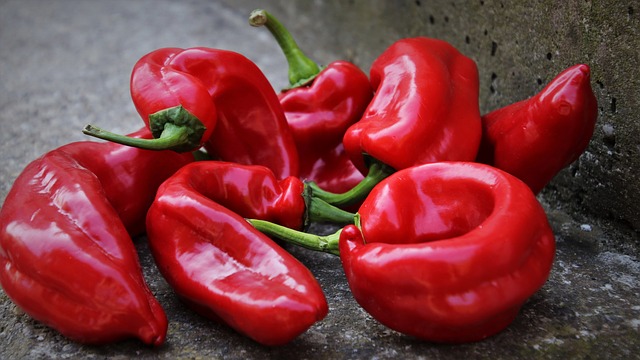
Introduction
Paprika extract is often seen on ingredient lists as a natural colour. Most snacks appear to contain it and it is preferred to colours such as lycopene and many anthocyanins. It may also be part of a natural flavouring system where heat is required. The other benefit of such natural pigments in food is their presence is associated with many health aspects. The carotenoids are generally provitamins especially as provitamin A.
Paprika extract is prepared as an oleoresin from the dried ground fruits of Capsicum anuum or Capsicum frutescens which is often termed as sweet red pepper. In most cases the extract is obtained as an oil-slouble solution which is standarised with vegetable oil. Thee are quoted in multiples of 10,000 with 40,000, 60,000, 80,000, and 100,000 being the most often obtained from suppliers. A 100,000 colour-strength solution is approximately equivalent to a solution of 10 per cent carotenoids. Water soluble variants are prepared by binding to polysorbates or by creating emulsions with gum acacia.
The main pigments are all carotenoids. The predominant colour is capsanthin which can be anywhere between 32 and 38 per cent of the total pigment content (Fisher and Kocis, 1987). The general order in decreasing amounts is beta-carotene, violaxanthin, cryptoxanthin, capsorubin, cryptocapsin, zearanthin, antheraxanthin and capsanthin epoxide. The pigments are all oil soluble by esterification with fatty acids.
The pigment composition is analysed using some form of chromatography such as HPLC where saponification is often but not always needed (Minguez-Mosquera and Hornero-Mendez, 1993).
Uses Of Paprika Extract
Meats, chorizo, soups such as goulashes, and sauces.
Chillis and sweet peppers are popular garden vegetables and relatively straightforward to grow.
Products
Please note we have links to our affiliate marketing partners. Please read our affiliate disclosure.
Purchase your paprika products here
References
Fisher, C. & Kocis, J.A. (1987) Separation of Paprika Pigments by HPLC. J. Agric. Food Chem., 35 pp. 55-57 (Article)
Gross, J. (2012). Pigments in vegetables: chlorophylls and carotenoids. Springer Science & Business Media.
Minguez-Mosquera, M. I., & Hornero-Mendez, D. (1993). Separation and quantification of the carotenoid pigments in red peppers (Capsicum annuum L.), paprika, and oleoresin by reversed-phase HPLC. Journal of Agricultural and Food Chemistry, 41(10), pp. 1616-1620.
Leave a Reply